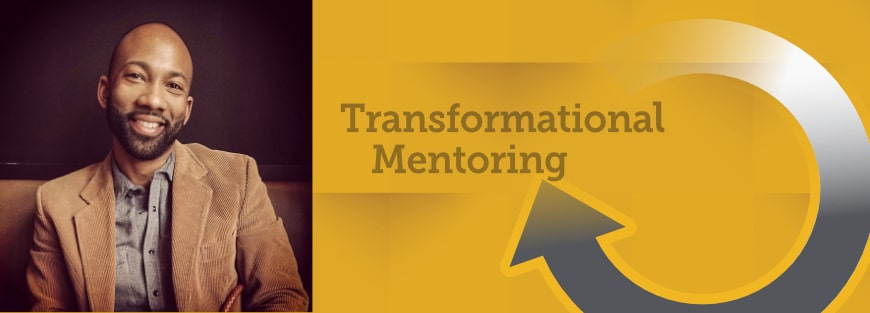Moving from Transactional to Transformational
Posted by: DVULI | July 10, 2021

by Bwana Clements, (Indianapolis 2013)
The discussion around youth mentoring is at an all-time high. Whether it’s federal interest from the Office of Juvenile Justice and Delinquency Prevention in Washington providing a new evidence-based strategy or a local church searching for an easy-to-implement, funder-approved strategy, mentoring services are all the rage.
Schools, churches, community centers, athletic clubs, professional groups, retired teachers, law enforcement, business owners, and neighborhood “OGs” (Original Gangsters) have all thrown their hats in the proverbial mentoring ring. Some are character-based; some are athletic-based. Some focus on
violence prevention and some focus on academics. Some have well-funded facilities from which to operate, while others use a pick-up and drop-off model. Some use curriculum, while some just speak from the heart. Mentoring services come in all shapes and sizes. My goal is to highlight a few mentoring strategies that I have found to be relevant, culturally appropriate, and highly effective throughout my career working with urban youth in the city of Indianapolis.
Here’s what we know. Mentoring is a mutually agreed upon, person-toperson interaction for the expressed intent of passing skill, insight, and knowledge from one person (mentor) to the other (mentee). The Scriptures record Moses mentoring Joshua, Eli mentoring Samuel, and of course, our Lord Jesus mentoring the Twelve. Michael Jordan mentored Scottie Pippin, and Maya Angelou mentored Oprah. Without taking a deep dive into each of these examples, allow me to point out the one thing these mentoring pairs share—relationships. While these references have their own unique qualities and situations, they endured challenges, overcame obstacles, and leveraged the power of relationship to succeed and ultimately produced success.
Effective mentoring must be based on a genuine, enduring, and transparent mentee-focused relationship for accomplishing a goal. The order of this process is important. Notice how “mentee-focused relationship” precedes “accomplishing a goal.” In other words, connection before correction. As a professional consultant in educational spaces and as an adjunct professor in the education department of a local university, I’ve had the privilege of learning about the Positive School Discipline Model. In the article, “Connection Before Correction,” Dr. Jane Nelsen writes, “Extensive research shows that we cannot influence children in a positive way until we create a connection with them. It is a brain (and heart) thing. Sometimes we have to stop dealing with the misbehavior and first heal the relationship.”
Naturally, a follow-up question might be, “How do I connect with a mentee who has bad behavior?” Wink, wink, this is my specialty. We connect by being human, remembering the qualities of our favorite teacher, and seeing behaviors as symptoms of deeper issues and not the essence of the child. We connect by asking what happened to him instead of what’s wrong with him. Connecting is about our approach to the mentoring relationship, not simply the outcomes of the relationship. Connecting is about moving from transactional to transformational. Here are a few simple ways to make a connection with your mentee:
1. Be reliable. In other words, be trustworthy. In my home, we say that trust is built by doing what you say, when you say, how you say. I’m not sure we can be clearer than that. Children need to trust and be confident that you will not be just another adult to disappoint them. Be on time, communicate the reason why a planned event can’t happen, and try your best not to underachieve. If you say something, your mentee should be able to believe that it is going to happen.
2. Notice them and be present. As soon as you see your mentee, words should start to flow from your mouth. “There’s my guy. Give me some love, man. You’re looking great today, Kobe!” Or “There’s my guy. Give me some love, brother. Awe, man, that wasn’t the Kobe love I’m used to. Something’s up.” Mentors have to be dialed in. Notice everything like eye contact, hygiene, mood, body language, or whether the mentee is wearing the same clothes he or she had on two days ago. When you see it, call it out. This sends the message to the mentee that you notice him or her.
3. Address concerns. Mentoring provides extremely close access to the most private and intimate areas of a child’s life. Often, mentors will be told information before the child has told a parent. Therefore, mentors have the responsibility to advocate for their mentee’s well-being in every possible way. Mentors must address the concerns of their mentees or refer them to someone who can.
One of the most important exercises I’ve completed as a professional was developing my own personal mission statement for the work I do. It reads: “To encourage, educate, and empower the youth, families, and communities I serve through the power of relationships, leaving them more capable than they were before.” This guides my interactions with the youth I am blessed to serve. It guides my approach. Notice the statement said nothing of saving, fixing, or changing them. My posture, the one I’ve chosen, is that I will meet my mentees exactly where they are and encourage, educate, and empower them to the best version of themselves. Sometimes, because of the relationships I create and the posture I assume, mentees exceed their own expectations in the process. This is what it means to move from transactional to transformational.
Bwana Clements (Indianapolis 2013) is a social worker, professional consultant, program developer, keynote speaker, and author. He earned a BS at Ball State University and an MSW at Indiana University. bwanaleads@gmail.com

